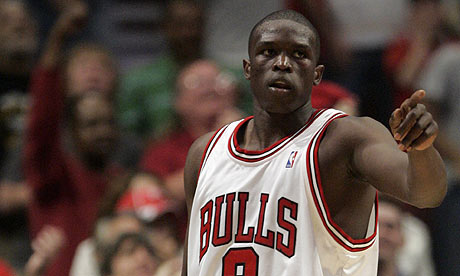Several years ago, Shawn Gorman and I developed a system for
evaluating NBA players where we essentially grouped them into different tiers.
What’s unique about this system isn’t that we grouped them this way, but rather
how specifically we defined each tier. Although the rankings are based purely
on our own opinions, this system is helpful in describing what conditions we
believe a player must meet in order to be in a certain tier. We group
players before each season starts, projecting what we expect their value to be
in the only upcoming season, and we assume full health. After each season, we would refine our system to be a more accurate model of how we value certain players.
We are now ready to introduce our system to the world through Pro Basket-blog,
and hopefully spark debate among our readers. You won’t see our evaluations in
this post (those come soon), rather you’ll just see the rubric we created to distinguish
each level. Without further ado, here is the Becker-Gorman NBA Evaluation
Model:
In order to qualify, a player must be an above-average NBA
player. His role on his team should be described as “essential”, and his impact
on a game should be greater than that of a role player. The player’s said
impact is mostly independent of his teammates, and therefore would measure
approximately the same on any team. Qualified players are grouped into one of
five tiers, with tier one being the best, tier two being the second best, etc.
Tier One
These players are the elite of the elite. Their teams are
generally title contenders, and therefore these are your MVP candidates. A team
cannot win a championship without one of these as their best players.
Tier Two
A fine line exists between Tier One and Tier Two, but at the
end of the day, this player is no more than the second best player on a
championship team. They are perennial
All-Stars and All-NBA recipients, but don’t have quite the impact of a Tier One
player.
Tier Three
These are your All-Stars who aren’t quite franchise players.
If they are your franchise player, then you’re team is a second-round playoff
team at best. They typically have a flaw that keeps them out of the top two
Tiers.
Tier Four
Borderline All-Stars are found here. On a great team they
look like the glue guy, but on a bad team, they are a “stat-stuffer.” They are
usually considered underrated or overpaid (or both).
Tier Five
The rest of the qualified players fall into this category,
which is the hardest to distinguish. They aren’t All-Stars, but solid
contributors and almost always are above-average starters. Again, they would
have a positive impact on whatever team they played for.
A few more notes:
- Tier Five is the hardest to distinguish because that is where isolating a player's impact from his team becomes most difficult
- The entire list of players consists of approximately 20% of the league
- Generally, the number of players in each Tier increases as you go down
- The model measures the impact of that player on the current season, so age is irrelevant
- Contracts do not matter either





I think the most fascinating aspect of the rankings is the divide between the 1s and 2s as you point out.
ReplyDelete